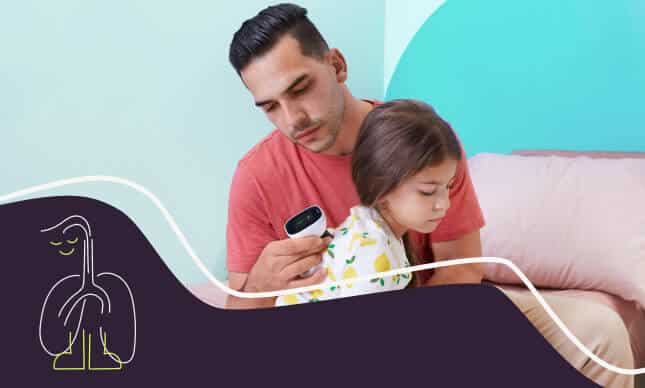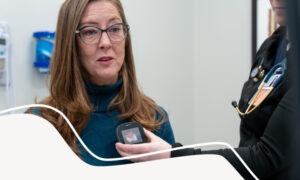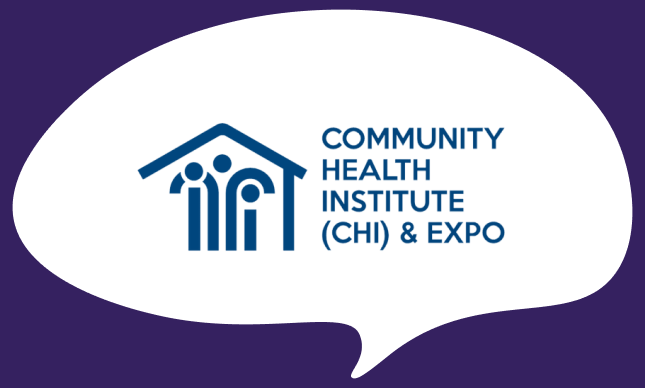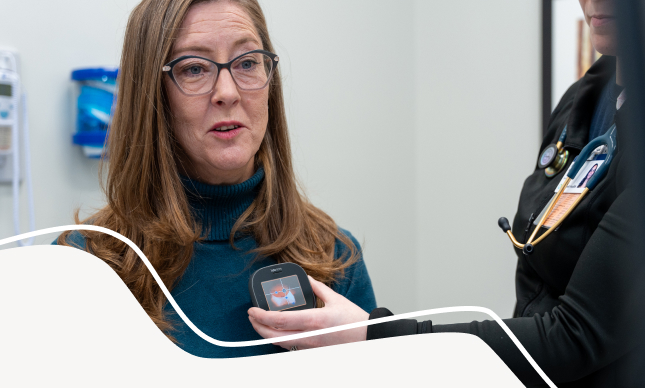Breathing easier: How remote care can help solve challenges posed by RSV

Record RSV numbers
Each year, respiratory syncytial virus, or RSV, affects millions of people and leads to tens of thousands of hospitalizations. This common respiratory virus is experienced as a mild cold in the majority of healthy people but can lead to severe bronchitis or pneumonia in more vulnerable populations including babies, young children, and older adults with pre-existing conditions. This year’s RSV wave has been more severe than in previous years, surging earlier and impacting more people. Experts are calling this season of respiratory viruses a tripledemic, because COVID, flu, and RSV cases are being seen in record numbers.
Older children are also being diagnosed with RSV this year in numbers not previously seen. Theories as to why include the fact that older children may have missed earlier exposure to RSV due to quarantine, isolation, and mask mandates during the height of COVID.
Hospitals under strain
Adding RSV into the mix of flu and COVID-19 has led to a surge in hospitalization rates, and hospital beds across the US are full. Recovery can take weeks, with hospitalized RSV patients requiring treatment like suctioning, oxygen support, and IV fluids. Over three-fourths of pediatric hospital beds are full, with many states reporting that over 90% of pediatric beds are currently occupied. Among adults, hospitalization rates for RSV are 10 times higher than they have been in previous years.
Hospital staff say this is the worst respiratory virus season they can remember. Hospitals are already overwhelmed by flu cases, rising COVID cases, and other illnesses. The influx of RSV patients has overworked staff wondering how they’ll keep up, and staff are calling the tripledemic unsustainable. Some hospitals have had to turn to extreme measures to manage the rise in patients, such as setting up tents or considering calling in the National Guard. The holiday season means more people are traveling and getting together in indoor spaces, which will likely only exacerbate the situation.
The role of remote care
Remote care plays an important role in easing the RSV burden in hospitals. TytoCare’s Home Smart Clinic enables clinicians to carry out fully remote physical exams that allow common conditions like RSV to be properly diagnosed and monitored. The Home Smart Clinic is equipped with a suite of AI-supported diagnostic tools that listen to heart and lung sounds to detect wheezing and bronchitis. A pulse oximeter measures heart rate and blood oxygen levels, and an integrated thermometer tracks temperature changes.
Remote care can alleviate caregiver anxiety by helping parents determine when at-home care is sufficient and when further interventions are warranted. Far more than just an audio or video telehealth visit, TytoCare provides accurate, reliable care that can keep most RSV patients out of the ED and urgent care centers.
During RSV season and all year round, it’s important to ensure that the only patients in the ED are those who really need to be there. Unnecessary ED visits put patients at greater health risk by exposing them to germs that can cause their condition to escalate. Fewer ED visits also significantly reduce healthcare spend. A recent case study showed that TytoCare increased ED diversion by over 40% and avoided 37% of ED spend.
This year’s RSV surge has added tremendous pressure to already overburdened hospitals, but remote care can help. The Home Smart Clinic lowers the pressure on hospitals and staff overwhelmed by RSV and other health conditions. With TytoCare, low-risk RSV patients and their caregivers can breathe more easily, knowing that they are being optimally cared for and closely monitored from the comfort of home.





